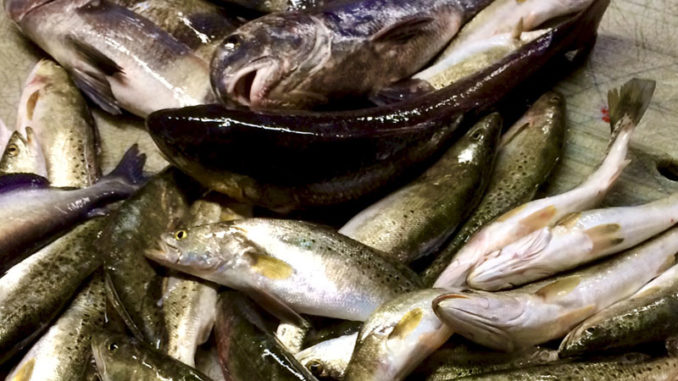
Biodiversity explains how all parts in the Gulf Coast’s fishery depend on each other, and how changes can have far-reaching effects, especially on recreational fishing.
Biodiversity is an intriguing concept, laying out the existence of many functional parts that together run a very complex system, maybe the most-complex system in the cosmos.
Biodiversity can be defined as the variability among living organisms. It supplies plenty of functioning parts that together run the immensely complex system of organic life on earth. The functions of living organisms include capturing and storing energy, producing organic material, decomposing organic material, cycling water and nutrients, controlling erosion or pests and much more.
We humans are also part of this biodiversity, and as we grow in population and technological power, we make more and more of an impact in the ecosystem. We also cannot live outside of the natural organic system, so being aware of how biodiversity makes the world work and how our actions might improve or worsen biodiversity could help us survive with joy.
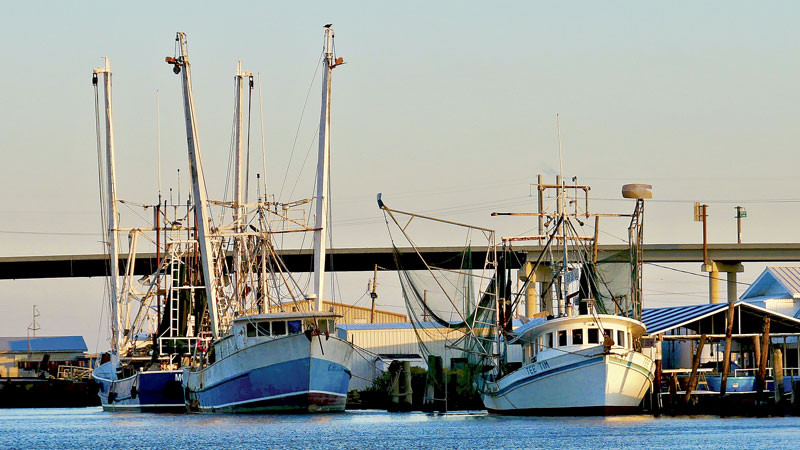
Biodiversity and fishing
How can we frame the importance of biodiversity as it relates to the interests of recreation fishermen?
Recreational fishermen are like car buyers. At least subconsciously, car buyers know it is important that there is an impeller for the car’s water pump, but they are focusing on the car as a singular item when they sign the purchase papers. As fishermen, we subconsciously know that something is keeping the water clean by eating the detritus, but it is the large speckled trout and redfish on which we are focused. In the same way car buyers know that the functioning of all the little parts in the car is critical to their satisfaction, we need to recognize that the functions provided by all the organisms in the water ultimately give us the recreational fishing experience we seek.
A few years ago, I read Mark Kurlansky’s fascinating book about cod fish, A Biography of the Fish That Changed the World. The cod was responsible for many changes in human society, including the growth of nations, wars between nations and the introduction of fish into the diet of residents of this country’s Midwest. Cod fishing brought Basque fishermen to the New World long before Columbus arrived, but they were so secretive about where they caught their cod, they didn’t get credit for the discovery.
The Atlantic cod fish industry eventually collapsed from extreme overfishing, largely due to unregulated harvest and the belief that no amount of harvest would be too great to impact the Atlantic cod stock.
Alexandre Dumas, a fishery expert of sorts, famously stated in 1873 that his calculations of cod reproduction showed that if all the eggs hatched and each cod grew to full size, “It would take only three years for the sea to be full of cod, so that one could walk dry-shod across the Atlantic on their backs.” This belief in the everlasting existence of the cod stock nearly resulted in its total demise.
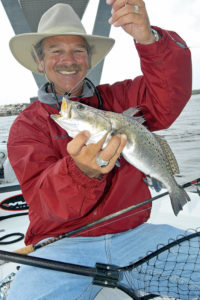
Manage bigger species
It is common for anglers to focus on harvest controls for the large species as the metric for successful fisheries management. Over the past two years, Louisiana’s inshore recreational fishing community has been engaged in an ongoing discussion about sustainable recreational harvest limits for the preservation of the speckled trout stock. The elimination of nearly all commercial harvest of trout has ensured that the stock will not collapse like the cod, but anglers also recognize other factors that are applying pressure, including an increase in fishermen and the destruction of habitat. A concern less-frequently heard is how overfishing of the speckled trout’s food sources can damage trout stocks by reducing biodiversity.
The Gulf of Mexico is an important resource for people living on its shores, and many people make their livelihood from its bountiful seafood. Louisiana blue crabs often find their way into crab cakes in New England, and Louisiana shrimp have supplied the Northeast since a shrimping moratorium began in 2014 after the collapse of the northern shrimp stock.
Louisiana Fisheries Forward reports that the Louisiana seafood industry provides more than $2.4 billion annually to the local economy. Louisiana’s seafood industry directly supports over 30,000 people and is one of the most-productive fisheries in the country. Louisiana harvests more shrimp than any other state and more than half of all menhaden. The menhaden harvests in Louisiana are reported to generate more than $90 million.
David Cresson of the Coastal Conservation Association said that while the value of commercial fishing to Louisiana is immense, a certain amount of damage to the recreational fishery is inevitable. There will always be a small percentage of gamefish killed as by-catch from commercial fishing, and commercial fishing removes forage fish on which the recreational species feed. Some commercial fishing activities also destroy recreational fish habitat, one example being dredging for oysters, which flattens the vertical oyster reefs and so destroys very productive habitat.
The CCA’s stated purpose is to “advise and educate the public on conservation of marine resources, and the objective is to conserve, promote, and enhance the present and future availability of coastal resources for the benefit and enjoyment of the general public.” Cresson said one of the primary ways that CCA-Louisiana fulfills its mission is to participate in public policy making, which often means working with the commercial fishing industry to achieve mutual benefit.
Sometimes, CCA must oppose practices of the commercial industry to defend recreational fisheries. A recent example was championing the ban on oyster dredging in Calcasieu and Sabine lakes. Now, oysters are harvested only with tongs in Calcasieu, which is preserving vertical reefs and enhancing the recreational fishery’s habitat. Incidentally, this policy has begun to restore oysters and is one success story on how recreational and commercial interests can align.
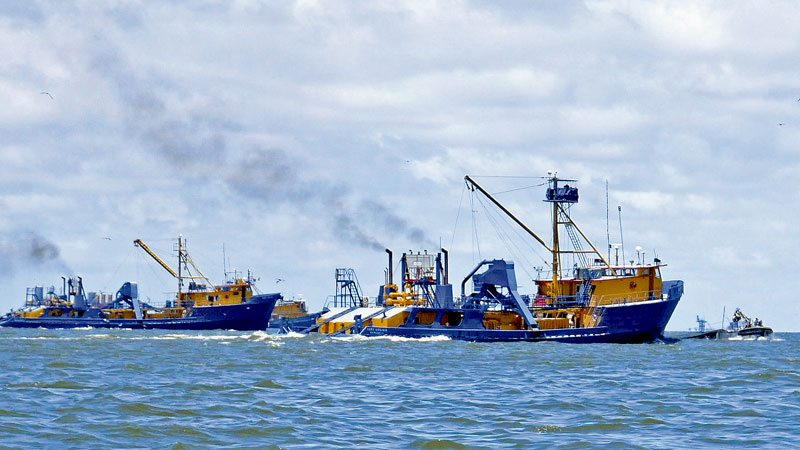
The menhaden issue
Commercial menhaden fishing has gotten the attention of many Louisiana recreational fishermen this year, chiefly because the commercial fleet has been visiting the same waters that inshore anglers are fishing and visibly harvesting what appears to be vast numbers of menhaden. Menhaden are a major food source for speckled trout and redfish, so anglers directly seeing the harvesting of menhaden have created a backlash on social media.
Many forage species, including menhaden, form bait balls for protection, which is effective when they are being attached by larger fish species. But because of bait-balling, humans with spotter airplanes and nets can scoop up the majority of these fish in a local area rather quickly.
The Gulf menhaden is arguably a Louisiana species. The 2015 Gulf Menhaden Management Plan highlights studies of tagged menhaden that show adult fish from states east and west of Louisiana slowly migrate toward the Mississippi River Delta, and that high densities of larvae are found near the Mississippi River. That supports researchers’ conclusions that spawning is concentrated near the mouth of the river. Not surprisingly, more than half of all menhaden harvested in U.S. waters are caught in Louisiana.
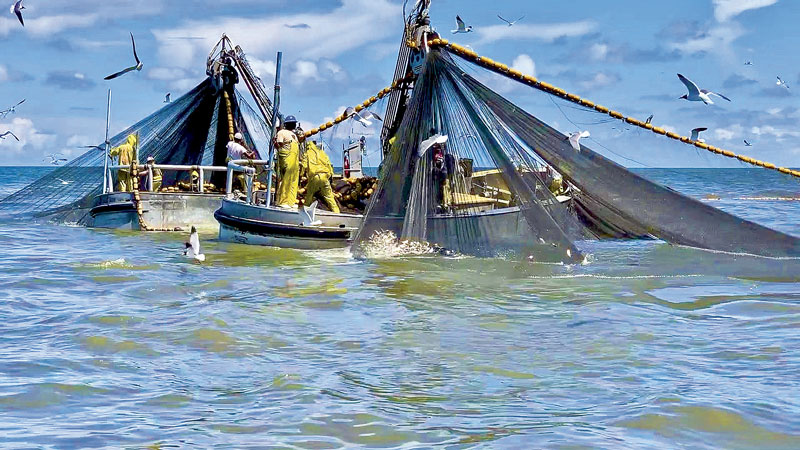
Where forage fish wind up
The Smithsonian Institute reports that forage fish account for one-third of marine commercial fishing harvests, and around 90% of forage fish are not consumed by humans — shrimp being the exception. Most forage fish are processed into fish meal, which is used to feed farmed fish, larger fisheries, livestock, poultry and pets. They are also used in products, including fertilizers and dietary supplements. Menhaden is one of the most useful of all forage fish due to its high oil content.
Cresson said the CCA is monitoring developing information about the commercial menhaden fishing in Louisiana waters. He said there is no harvest limit on menhaden, but the by-catch is limited to 5%. Adherence to the by-catch limit is self-enforced by the fishing fleet. Cresson said CCA is seeking to understand the effect of the 5% by-catch on recreational species that may be feeding on the menhaden while commercial netting is occurring.
Given the large amount of change occurring along the Gulf Coast, both in destruction and restoration, a major concern over the past few years is whether various government and non-government institutions are working together to ensure that projects don’t address one problem at the expense of others. Are restoration projects addressing coastal protection but also biodiversity and fishery habitat? Cresson was affirming that the various parties — including the Louisiana Department of Wildlife and Fisheries, the Coastal Preservation and Restoration Association, the Gulf fisheries commission and CCA — do communicate and are bought together by governor’s office.
Weekend warriors getting away from our jobs or commercial fishermen on the job, the coastal waters that are shared are meaningful to all, and collaboration on holistic approaches to keeping the ecosystem strong is needed.


